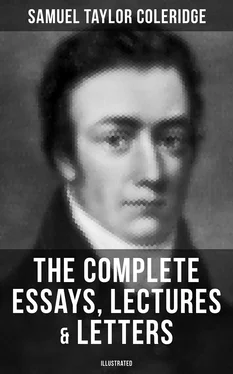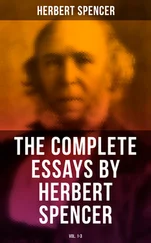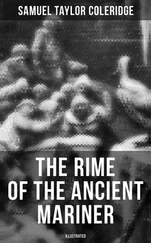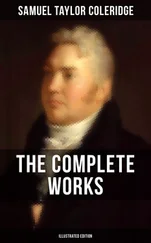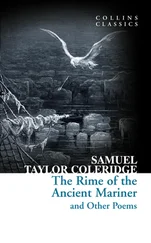[Footnote 18: i.e. Nether Stowey, at the foot of the Quantock Hills.]
[Footnote 19: Thomas Poole, Esq.]
[Footnote 20: The following lines are here referred to
”And now, beloved Stowey! I behold
Thy Church-tower, and, methinks, the four huge elms
Clustering, which mark the mansion of my friend;
And close behind them, hidden from my view,
Is my own lowly cottage, where my babe
And my babe’s mother dwell in peace. With light
And quicken’d footsteps thitherward I tend,
Remembering thee, O green and silent dell!
And grateful, that by nature’s quietness
And solitary musings, all my heart
Is soften’d, and made worthy to indulge
Love, and the thoughts that yearn for human kind.
Nether Stowey,
April 28th, 1798.” ]
[Footnote 21: Ossian.]
[Footnote 22: This illnatured remark requires no comment: but I would fain recommend the reader to peruse the beautiful and faithful portrait of him in the Preface to the second edition of the “Table Talk,” Murray, Albemarle Street.]
[Footnote 23: He was not an enthusiast in the sense this individual used the word; in whatever studies he was engaged, he pursued them with great earnestness, and they were sufficient to excite his powerful and sensitive intellect, so as to induce an observer not well acquainted with him to form this opinion. In the character of preacher, he exhibited more the character of philosopher and poet, never manifesting that sectarian spirit, which too often narrows the mind, or perhaps is rather the ‘result’ of a narrow mind, and which frequently seems to exclude men from the most substantial forms of Christianity, viz. “Christian charity and Christian humility.” His religion was the very opposite of a worldly religion, it was at all times the religion of love.
This visit to Shrewsbury, as the probable successor of Mr. Rowe, was undertaken by the advice of Mr. afterwards Dr. Estlin, a Unitarian dissenter and preacher in Bristol, a man possessed of great kindness and of great influence among this sect, to whom Coleridge had been indebted for many kind offices; the result of this visit forms a part of the sequel.]
[Footnote 24: ‘Poetical Works,’ vol. i. p. 238.]
[Footnote 25:
“No little fish thrown back into the water, no fly unimprisoned from a child’s hand, could more buoyantly enjoy its element than I this clear and peaceful home, with the lovely view of the town, groves, and lake of Ratzeburg.”]
[Footnote 26: From the earliest periods of authentic history, the Brocken has been the seat of the marvellous. On its summits are still seen huge blocks of granite, called the Sorcerer’s Chair and the Altar. A spring of pure water is known by the name of the Magic Fountain, and the Anemone of the Brocken is distinguished by the title of the Sorcerer’s Flower. These names are supposed to have originated in the rites of the great Idol Cortho, whom the Saxons worshipped in secret on the summit of the Brocken, when Christianity was extending her benignant sway over the subjacent plains. As the locality of these idolatrous rites, the Brocken must have been much frequented, and we can scarcely doubt that the spectre which now so often haunts it at sunrise, must have been observed from the earliest times; but it is nowhere mentioned that this phenomenon was in any way associated with the objects of their idolatrous worship. One of the best accounts of the Spectre of the Brocken, is that which is given by M. Haué, who saw it on the 23rd May, 1797. After having been on the summit of the mountain no less than thirty times, he had at last the good fortune of witnessing the object of his curiosity. The sun rose about four o’clock in the morning through a serene atmosphere. In the south-west, towards Achtermannshöhe, a brisk west wind carried before it the transparent vapours, which had yet been condensed into thick heavy clouds. About a quarter past four he went towards the inn, and looked round to see whether the atmosphere would afford him a free prospect towards the south-west, when he observed at a very great distance, towards Achtermannshöhe, a human figure of a monstrous size. His hat having been almost carried away by a violent gust of wind, he suddenly raised his hand to his head, to protect his hat, and the colossal figure did the same. He immediately made another movement by bending his body, an action which was repeated by the spectral figure. M. Haué was desirous of making further experiments, but the figure disappeared. He remained however in the same position expecting its return, and in a few minutes it again made its appearance on the Achtermannshöhe, when it mimicked his gestures as before. He then called the landlord of the inn, and having both taken the same position which he had before, they looked towards the Achtermannshöhe, but saw nothing. In a very short space of time, however, two colossal figures were formed over the above eminence, and after bending their bodies, and imitating the gestures of the two spectators, they disappeared. Retaining their position and keeping their eyes still fixed upon the same spot, the two gigantic spectres again stood before them, and were joined by a third. Every movement that they made was imitated by the three figures, but the effect varied in its intensity, being sometimes weak and faint, and at other times strong and well defined —— . “Vide Sir D. Brewster’s Natural Magic, p. 128.]
[Footnote 27: Horseley appears to have been in his way a Christian Hercules, and well adapted for cleansing even an Augean stable of apostasy.]
[Footnote 28: “Letter sixteenth,” p. 264. ed. 1789, in Bishop Horsley’s
‘Tracts’ in controversy with Dr. Priestley.]
[Footnote 29: This observation, it is presumed, alludes to the time when he was ‘preaching’ Unitarianism.]
[Footnote 30: Written in 1805.]
[Footnote 31:
Alas! for myself at least I know and feel, that wherever there is a wrong not to be forgiven, there is a grief that admits neither of cure nor comforting.
‘Private Record, 1806.’]
[Footnote 32: It appears that Mr. Alexander Macauley, the secretary, an honest and amiable man, died suddenly, without “moan or motion,” and Coleridge filled his situation till the arrival of a new secretary, appointed and confirmed by the ministers in England.]
[Footnote 33: 1805.
“For months past so incessantly employed in official tasks, subscribing, examining, administering oaths, auditing,” &c.]
[Footnote 34: April 22, 1804.
”I was reading when I was taken ill, and felt an oppression of my
breathing, and convulsive snatching in my stomach and limbs. Mrs.
Ireland noticed this laborious breathing.”]
[Footnote 35: I would fain request the reader to peruse the poem, entitled “A Tombless Epitaph,” to be found in Coleridge’s ‘Poetical Works’, 1834, page 200.]
[Footnote 36: Coleridge when asked what was the difference between fame and reputation, would familiarly reply, “Fame is the fiat of the good and wise,” and then with energy would quote the following beautiful lines from Milton: —
Fame is no plant that grows on mortal soil,
Nor in the glistering foil
Set off to the world, nor in broad rumour lies:
But lives and spreads aloft by those pure eyes,
And perfect witness of all-judging Jove;
As he pronounces lastly on each deed,
Of so much fame in Heaven expect thy meed.
‘Lycidas.’]
[Footnote 37: “The following memoranda written in pencil, and apparently as he journeyed along, but now scarcely legible, may perhaps have an interest for some readers: —
“Sunday, December 15th, 1805.
“Naples, view of Vesuvius, the Hail-mist — Torre del Greco — bright amid darkness — the mountains above it flashing here and there from their snows; but Vesuvius, it had not thinned as I have seen at Keswick, but the air so consolidated with the massy cloud curtain, that it appeared like a mountain in basso relievo, in an interminable wall of some pantheon.”]
Читать дальше
